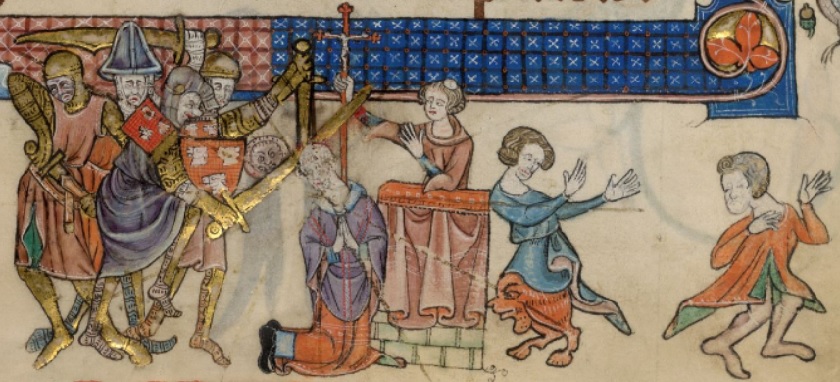
Thomas à Becket

Introduction
In the Middle Ages, the Church was very rich and powerful. The Pope – who was head of the Christian Church – claimed that even kings should obey him. The Pope said that if a priest committed a crime, he should be tried in special Church courts, where the punishments were not very strict.
But King Henry II of England (1154-89) wanted more control over the Church in England. He wanted priests and monks to be tried by the king's judges.
Henry's best friend was a priest called Thomas à Becket. When the Archbishop of Canterbury died in 1162, Henry saw a chance to get more control over the Church. He appointed Thomas as Archbishop of Canterbury.
But when Thomas became Archbishop, he changed. He spent a lot of time praying and reading the Bible. He gave food to the poor and washed their feet. He wore an uncomfortable hair shirt like a monk. When Henry tried to get more control over the Church courts, Becket stopped him.
Eventually, on Christmas Day, 1170, Henry lost his temper. 'Will nobody rid me of this troublesome priest?' he shouted out to no-one in particular.
Thomas a Becket was a proud and boastful man. He had insulted many of Henry's knights. Four of them saw their chance. They went to Canterbury, put on their armour and strode into the Cathedral.
The knights killed Becket.
Study these Sources, then answer the question sheet by clicking on the 'Time to Work' icon at the top of the page.
Links:
The following websites will help you research further:
Thomas à Becket:
•
BBC video
• The
BBC
Bitesize site - looks beyond simply 'what happened'
• SchoolHistory
Henry II and Thomas Becket game
1 The Death of Becket – I
The account of the death of Becket was written by Edward Grim in about 1176.
Edward Grim was a monk who wrote his account about six years after Becket's death; how can we tell from his account that he was an eye-witness?
Full of anger, the knights called out, Where is Thomas Becket?' At this, bold and and fearless, he answered, 'I am here.' Having said this, he turned to the right, under a pillar, by the altar of the Virgin Mary.
Then they laid evil hands on him, dragging him so that they might kill him outside the church. But they could not pull him from the pillar.
Then, seeing that he was about to die, he bowed his head and, joining his hands, he lifted them up and prayed to the Virgin Mary.
He had barely spoken when a wicked knight suddenly leapt on him and wounded him on the head, cutting off the top of his crown; and by the same blow he wounded the arm of him who tells this.
He was given a second blow to the head, but still stood firm. At the third blow he fell to his hands and knees, saying in a low voice, 'For the name of Jesus I am ready to die.'
Then the third knight gave him a terrible wound as he lay there, so that the sword broke against the stone floor and the top of the head was cut right off – so that the blood white with the brain, and the brain red with blood, dyed the floor of the church.
The fourth knight
stopped anyone interfering. And a fifth, a cleric who had gone with the
knights, put his foot on the neck of the holy priest and, horrible to say,
scattered his brains and blood over the floor.
Continued:
Everybody was angry with Henry. Rumours spread that miracles had happened at Becket's tomb. The Pope made Becket a saint.
In 1174 King Henry walked barefoot through the streets of Canterbury. To show he was sorry about Becket's death, he let the monks whip him. He gave up his attempt to control the Church in England.
Becket had won.
2 The Death of Becket – II
The painting of the death of Becket in the Luttrell Psalter (c.1340)
